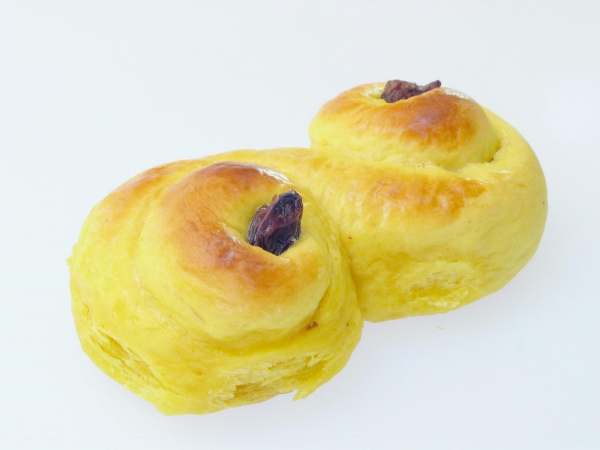Facts About Saffron bun
A saffron bun, often known as a Cornish tea treat bun or revel bun, is a delightful, sweet, and spiced yeast-leavened pastry. Infused with the exotic flavor of saffron and laden with dried fruits such as currants and sultanas, these buns offer a unique and aromatic experience. The primary ingredients typically include plain flour, butter, yeast, sugar, currants, and sultanas. When baked in larger loaf tins, they are referred to as saffron cakes. Similar treats can be found in Sweden and Norway, where they are known as lussebullar or lussekatter.
In Cornwall, the revel bun is a staple for special events such as anniversary feasts and church dedications. In the western part of Cornwall, these buns, referred to as tea treat buns, are closely associated with Methodist Sunday school outings. Traditionally, in some parts of Britain, these buns were baked on sycamore leaves and sprinkled with powdered sugar.
In Sweden and Norway, saffron buns have a slightly different twist. They typically forgo cinnamon and nutmeg and favor raisins over currants. These buns are often shaped into unique traditional forms and are a cherished treat during Advent, especially on Saint Lucy’s Day, which falls on December 13. They are also popular in both Finnish-speaking regions and among Swedish-speaking Finns.
In contemporary times, most commercially available saffron buns and cakes are enhanced with food dyes to amplify the yellow color that saffron imparts. Due to the high cost of saffron, bakers have turned to food coloring as a more economical alternative. This practice began after the First World War, when saffron became scarce, prompting bakers to find alternative ways to maintain the vibrant color of these beloved buns.

 Finland
Finland